GUILLERMO KUITCA: A CUBIST CHAPELL IN THE MUSÉE NATIONAL PICASSO-PARIS
The Argentine artist Guillermo Kuitca was commissioned to create a site-specific work in the chapel of the Hôtel Salé, home of the Musée national Picasso-Paris. The final commission, whose canvas is the walls of the chapel, can now be visited.
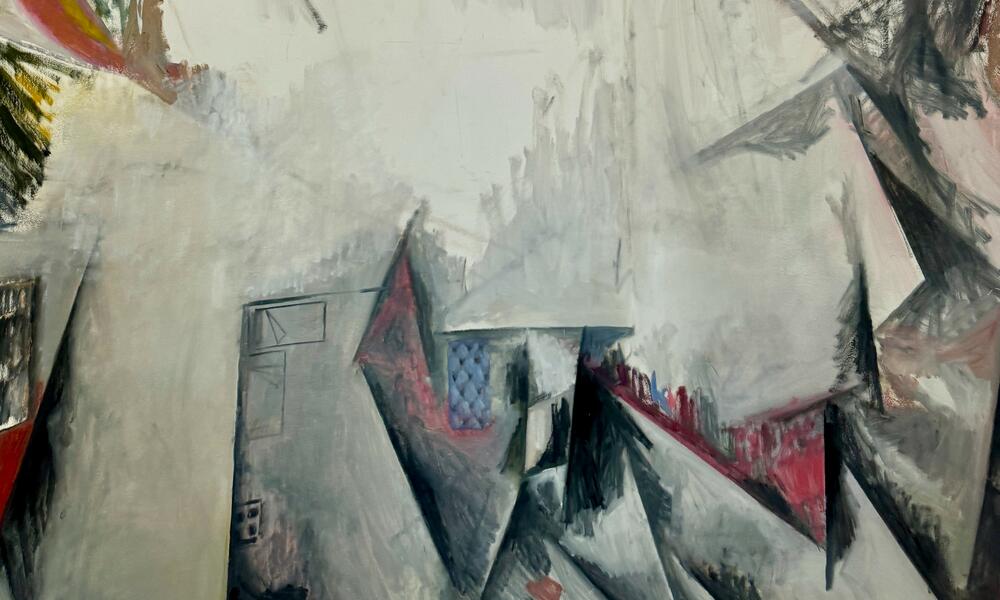
Since his intervention at the Venice Biennale in 2007, Kuitca has developed a new language, echoing the architecture, which the artist calls ‘cubistoid painting’, in which a set of intersecting lines, like so many folds in the plane, is deployed directly on the walls, forming a new pictorial space.
Kuitca describes his place on the carousel of modern art: “Many years ago, I painted pictures showing a luggage conveyor belt. I think that art history was the real subject of these paintings. Art would be this carousel; the work of art, a piece of luggage and the artists, passengers. While waiting for our luggage, we ask ourselves a number of questions: Will my suitcase arrive and will I be able to recognise it among other similar ones? And if I took someone else's suitcase, would I be wearing their clothes? Will my luggage be destroyed forever? For me, these questions are a meditation on inheritance. They also envision a possible encounter with Picasso, as if he were, after all, another passenger”.
For Kuitca, painting has a memory. Through these experiments, he links up with the history of modern art, Cubism being invoked as the trace of a movement that operates like a diffraction of reality, the construction of an imaginary space. This site-specific installation was supported by the Hauser & Wirth gallery.
Guillermo Kuitca was born in 1961 in Buenos Aires, where he continues to live and work, Argentine artist Guillermo Kuitca draws on a range of iconography, including architectural plans, maps, theaters, musical scores and domestic spaces to produce an oeuvre that explores themes of history, memory, structured absence, sound and silence and the tension between the empirical and abstract. Shifting from gestural mark-making to linear precision, Kuitca’s work mines varied aesthetic styles and histories, and in the latter half of his career, he has achieved significant acclaim for his deployment of a unique cubist style that masterfully reconciles abstraction with an illusionist form of figuration.
May interest you
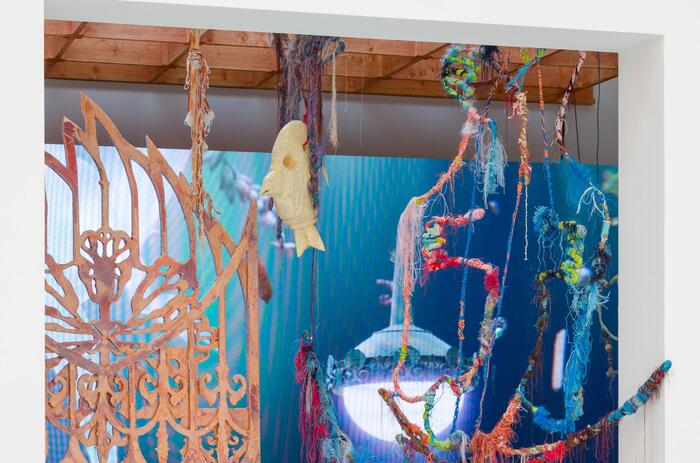
The 2024 Venice Biennale has taken a profound interest on cyclical themes, with water emerging as a dominant motif across exhibitions. In resonance to Pedrosa’s title for this year ‘Stranieri Ovunque’, we see water as a dominant locus for the subjects of travel, shared heritage and fluctuation. On itself, water is seen (as both a vital resource and a destructive force) at the heart of the pavilions representing Greece, France, and in Otero Torres’ Arsenale installation, Aguacero. These exhibitions delve into water’s duality: as a life-giver and a potential destroyer, as a symbol of both division and connection.
WATER, CYCLES AND TRANSFORMATION AT THE VENICE BIENNALE
The 2024 Venice Biennale has taken a profound interest on cyclical themes, with water emerging as a dominant motif across exhibitions. In resonance to Pedrosa’s title for this year ‘Stranieri Ovunque’, we see water as a dominant locus for the subjects of travel, shared heritage and fluctuation. On itself, water is seen (as both a vital resource and a destructive force) at the heart of the pavilions representing Greece, France, and in Otero Torres’ Arsenale installation, Aguacero. These exhibitions delve into water’s duality: as a life-giver and a potential destroyer, as a symbol of both division and connection.

The 2024 Venice Biennale has taken a profound interest on cyclical themes, with water emerging as a dominant motif across exhibitions. In resonance to Pedrosa’s title for this year ‘Stranieri Ovunque’, we see water as a dominant locus for the subjects of travel, shared heritage and fluctuation. On itself, water is seen (as both a vital resource and a destructive force) at the heart of the pavilions representing Greece, France, and in Otero Torres’ Arsenale installation, Aguacero. These exhibitions delve into water’s duality: as a life-giver and a potential destroyer, as a symbol of both division and connection.
WATER, CYCLES AND TRANSFORMATION AT THE VENICE BIENNALE
The 2024 Venice Biennale has taken a profound interest on cyclical themes, with water emerging as a dominant motif across exhibitions. In resonance to Pedrosa’s title for this year ‘Stranieri Ovunque’, we see water as a dominant locus for the subjects of travel, shared heritage and fluctuation. On itself, water is seen (as both a vital resource and a destructive force) at the heart of the pavilions representing Greece, France, and in Otero Torres’ Arsenale installation, Aguacero. These exhibitions delve into water’s duality: as a life-giver and a potential destroyer, as a symbol of both division and connection.
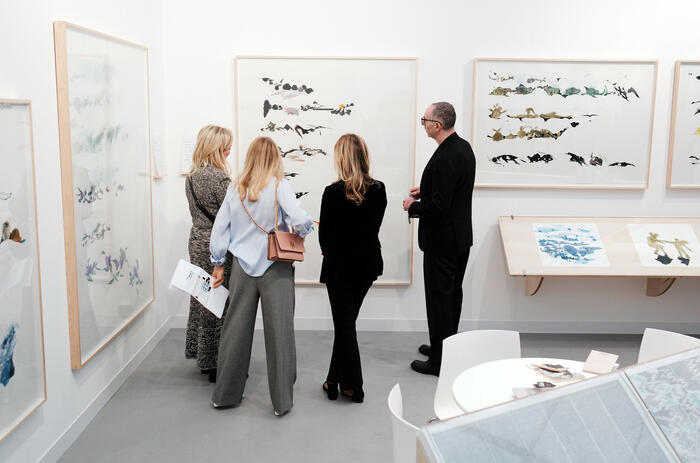
Mid-October marks a pivotal moment in the art world, as the spotlight shifts between London and Paris. First up is London, with Frieze opening on October 9th accompanied by a flurry of gallery openings and art events across the city. This season also sees important auctions, with leading houses hosting sales of Modern and Contemporary art.
A TALE OF TWO CITIES: LONDON VS. PARIS, THE ART WORLD’S ONGOING RIVALRY
Mid-October marks a pivotal moment in the art world, as the spotlight shifts between London and Paris. First up is London, with Frieze opening on October 9th accompanied by a flurry of gallery openings and art events across the city. This season also sees important auctions, with leading houses hosting sales of Modern and Contemporary art.
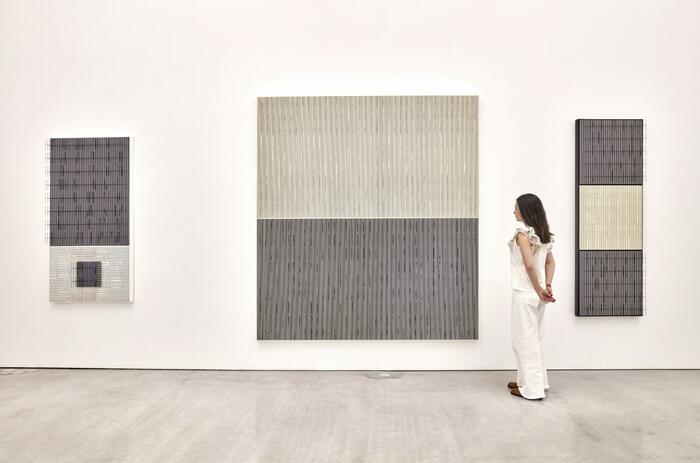
Jesús Rafael Soto (Ciudad Bolívar, Venezuela, 1923-Paris, France, 2005) carried out several investigations during the 1960s on possible solutions to face the fragmentation that his language needed. From those explorations emerged the T, a fine, metallic element of simple purity that allowed him to access, with satisfaction, to that disintegration he pursued and to reach a certain sensation of vibration and sublime volatility thanks to the linear disposition of these elements and their uniform arrangement that ended up giving the work a certain mediation between the spectator and the space and movement.

Last Thursday, September 26, a ceremony was held at the French Embassy in Paraguay, where Ambassador Pierre-Christian Soccoja awarded art critic Adriana Almada and visual artist Félix Toranzos with the Order of Arts and Letters. Both were part of the third edition of Pinta Sud | ASU.
ADRIANA ALMADA AND FÉLIX TORANZOS: AWARDED BY THE GOVERNMENT OF FRANCE
Last Thursday, September 26, a ceremony was held at the French Embassy in Paraguay, where Ambassador Pierre-Christian Soccoja awarded art critic Adriana Almada and visual artist Félix Toranzos with the Order of Arts and Letters. Both were part of the third edition of Pinta Sud | ASU.

The Brooklyn Museum announced the selection of more than two hundred artists for The Brooklyn Artists Exhibition, which will open on the occasion of the Museum’s 200th anniversary. This extensive group show highlights the remarkable creativity and diversity of Brooklyn’s artistic communities. Reflecting on a rich history of fostering creativity and championing artists of all backgrounds, the Museum’s bicentennial is an opportunity to honor the borough’s artistic heritage while looking towards the future.
MORE THAN TWO HUNDRED ARTISTS SELECTED FOR THE BROOKLYN ARTISTS EXHIBITION
The Brooklyn Museum announced the selection of more than two hundred artists for The Brooklyn Artists Exhibition, which will open on the occasion of the Museum’s 200th anniversary. This extensive group show highlights the remarkable creativity and diversity of Brooklyn’s artistic communities. Reflecting on a rich history of fostering creativity and championing artists of all backgrounds, the Museum’s bicentennial is an opportunity to honor the borough’s artistic heritage while looking towards the future.
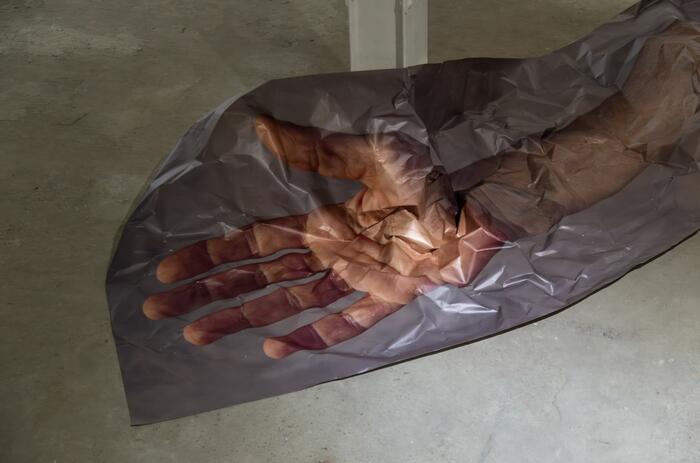
Cecilia Lenardón's Special Project at Pinta BAphoto, curated by Irene Gelfman, presents an installation that pushes the representation of the body through photography to the limit, transforming the static image into a living and performative experience. Entitled Cuatro piezas clave (Four Key Pieces), the work invites us to reflect on the body's boundaries and its capacity to tolerate effort and repetition.
REPETITION AND TRANSFORMATION - SPECIAL PROJECT AT PINTA BAphoto
Cecilia Lenardón's Special Project at Pinta BAphoto, curated by Irene Gelfman, presents an installation that pushes the representation of the body through photography to the limit, transforming the static image into a living and performative experience. Entitled Cuatro piezas clave (Four Key Pieces), the work invites us to reflect on the body's boundaries and its capacity to tolerate effort and repetition.
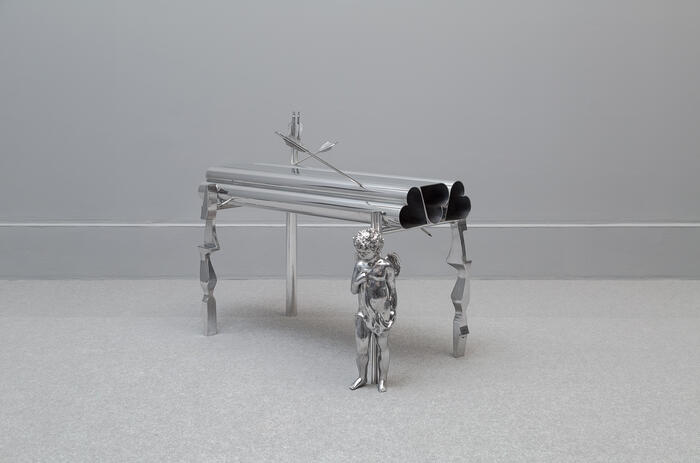
On Saturday, November 9, 2024, a new edition of Gallery arrives to explore the neighborhoods of San Telmo and La Boca, in Buenos Aires, Argentina. Gallery promotes free tours through art circuits where visitors can discover a great diversity of galleries, museums, artists' studios and foundations. A great opportunity to bring contemporary art closer to the general public and promote the extraordinary local offer.
THE LAST GALLERY EDITION OF THE YEAR IN BUENOS AIRES
On Saturday, November 9, 2024, a new edition of Gallery arrives to explore the neighborhoods of San Telmo and La Boca, in Buenos Aires, Argentina. Gallery promotes free tours through art circuits where visitors can discover a great diversity of galleries, museums, artists' studios and foundations. A great opportunity to bring contemporary art closer to the general public and promote the extraordinary local offer.

The 2024 Venice Biennale has taken a profound interest on cyclical themes, with water emerging as a dominant motif across exhibitions. In resonance to Pedrosa’s title for this year ‘Stranieri Ovunque’, we see water as a dominant locus for the subjects of travel, shared heritage and fluctuation. On itself, water is seen (as both a vital resource and a destructive force) at the heart of the pavilions representing Greece, France, and in Otero Torres’ Arsenale installation, Aguacero. These exhibitions delve into water’s duality: as a life-giver and a potential destroyer, as a symbol of both division and connection.
WATER, CYCLES AND TRANSFORMATION AT THE VENICE BIENNALE
The 2024 Venice Biennale has taken a profound interest on cyclical themes, with water emerging as a dominant motif across exhibitions. In resonance to Pedrosa’s title for this year ‘Stranieri Ovunque’, we see water as a dominant locus for the subjects of travel, shared heritage and fluctuation. On itself, water is seen (as both a vital resource and a destructive force) at the heart of the pavilions representing Greece, France, and in Otero Torres’ Arsenale installation, Aguacero. These exhibitions delve into water’s duality: as a life-giver and a potential destroyer, as a symbol of both division and connection.

Mid-October marks a pivotal moment in the art world, as the spotlight shifts between London and Paris. First up is London, with Frieze opening on October 9th accompanied by a flurry of gallery openings and art events across the city. This season also sees important auctions, with leading houses hosting sales of Modern and Contemporary art.
A TALE OF TWO CITIES: LONDON VS. PARIS, THE ART WORLD’S ONGOING RIVALRY
Mid-October marks a pivotal moment in the art world, as the spotlight shifts between London and Paris. First up is London, with Frieze opening on October 9th accompanied by a flurry of gallery openings and art events across the city. This season also sees important auctions, with leading houses hosting sales of Modern and Contemporary art.

Jesús Rafael Soto (Ciudad Bolívar, Venezuela, 1923-Paris, France, 2005) carried out several investigations during the 1960s on possible solutions to face the fragmentation that his language needed. From those explorations emerged the T, a fine, metallic element of simple purity that allowed him to access, with satisfaction, to that disintegration he pursued and to reach a certain sensation of vibration and sublime volatility thanks to the linear disposition of these elements and their uniform arrangement that ended up giving the work a certain mediation between the spectator and the space and movement.

Last Thursday, September 26, a ceremony was held at the French Embassy in Paraguay, where Ambassador Pierre-Christian Soccoja awarded art critic Adriana Almada and visual artist Félix Toranzos with the Order of Arts and Letters. Both were part of the third edition of Pinta Sud | ASU.
ADRIANA ALMADA AND FÉLIX TORANZOS: AWARDED BY THE GOVERNMENT OF FRANCE
Last Thursday, September 26, a ceremony was held at the French Embassy in Paraguay, where Ambassador Pierre-Christian Soccoja awarded art critic Adriana Almada and visual artist Félix Toranzos with the Order of Arts and Letters. Both were part of the third edition of Pinta Sud | ASU.

The Brooklyn Museum announced the selection of more than two hundred artists for The Brooklyn Artists Exhibition, which will open on the occasion of the Museum’s 200th anniversary. This extensive group show highlights the remarkable creativity and diversity of Brooklyn’s artistic communities. Reflecting on a rich history of fostering creativity and championing artists of all backgrounds, the Museum’s bicentennial is an opportunity to honor the borough’s artistic heritage while looking towards the future.
MORE THAN TWO HUNDRED ARTISTS SELECTED FOR THE BROOKLYN ARTISTS EXHIBITION
The Brooklyn Museum announced the selection of more than two hundred artists for The Brooklyn Artists Exhibition, which will open on the occasion of the Museum’s 200th anniversary. This extensive group show highlights the remarkable creativity and diversity of Brooklyn’s artistic communities. Reflecting on a rich history of fostering creativity and championing artists of all backgrounds, the Museum’s bicentennial is an opportunity to honor the borough’s artistic heritage while looking towards the future.

Cecilia Lenardón's Special Project at Pinta BAphoto, curated by Irene Gelfman, presents an installation that pushes the representation of the body through photography to the limit, transforming the static image into a living and performative experience. Entitled Cuatro piezas clave (Four Key Pieces), the work invites us to reflect on the body's boundaries and its capacity to tolerate effort and repetition.
REPETITION AND TRANSFORMATION - SPECIAL PROJECT AT PINTA BAphoto
Cecilia Lenardón's Special Project at Pinta BAphoto, curated by Irene Gelfman, presents an installation that pushes the representation of the body through photography to the limit, transforming the static image into a living and performative experience. Entitled Cuatro piezas clave (Four Key Pieces), the work invites us to reflect on the body's boundaries and its capacity to tolerate effort and repetition.

On Saturday, November 9, 2024, a new edition of Gallery arrives to explore the neighborhoods of San Telmo and La Boca, in Buenos Aires, Argentina. Gallery promotes free tours through art circuits where visitors can discover a great diversity of galleries, museums, artists' studios and foundations. A great opportunity to bring contemporary art closer to the general public and promote the extraordinary local offer.
THE LAST GALLERY EDITION OF THE YEAR IN BUENOS AIRES
On Saturday, November 9, 2024, a new edition of Gallery arrives to explore the neighborhoods of San Telmo and La Boca, in Buenos Aires, Argentina. Gallery promotes free tours through art circuits where visitors can discover a great diversity of galleries, museums, artists' studios and foundations. A great opportunity to bring contemporary art closer to the general public and promote the extraordinary local offer.

The 2024 Venice Biennale has taken a profound interest on cyclical themes, with water emerging as a dominant motif across exhibitions. In resonance to Pedrosa’s title for this year ‘Stranieri Ovunque’, we see water as a dominant locus for the subjects of travel, shared heritage and fluctuation. On itself, water is seen (as both a vital resource and a destructive force) at the heart of the pavilions representing Greece, France, and in Otero Torres’ Arsenale installation, Aguacero. These exhibitions delve into water’s duality: as a life-giver and a potential destroyer, as a symbol of both division and connection.
WATER, CYCLES AND TRANSFORMATION AT THE VENICE BIENNALE
The 2024 Venice Biennale has taken a profound interest on cyclical themes, with water emerging as a dominant motif across exhibitions. In resonance to Pedrosa’s title for this year ‘Stranieri Ovunque’, we see water as a dominant locus for the subjects of travel, shared heritage and fluctuation. On itself, water is seen (as both a vital resource and a destructive force) at the heart of the pavilions representing Greece, France, and in Otero Torres’ Arsenale installation, Aguacero. These exhibitions delve into water’s duality: as a life-giver and a potential destroyer, as a symbol of both division and connection.

Mid-October marks a pivotal moment in the art world, as the spotlight shifts between London and Paris. First up is London, with Frieze opening on October 9th accompanied by a flurry of gallery openings and art events across the city. This season also sees important auctions, with leading houses hosting sales of Modern and Contemporary art.
A TALE OF TWO CITIES: LONDON VS. PARIS, THE ART WORLD’S ONGOING RIVALRY
Mid-October marks a pivotal moment in the art world, as the spotlight shifts between London and Paris. First up is London, with Frieze opening on October 9th accompanied by a flurry of gallery openings and art events across the city. This season also sees important auctions, with leading houses hosting sales of Modern and Contemporary art.

Jesús Rafael Soto (Ciudad Bolívar, Venezuela, 1923-Paris, France, 2005) carried out several investigations during the 1960s on possible solutions to face the fragmentation that his language needed. From those explorations emerged the T, a fine, metallic element of simple purity that allowed him to access, with satisfaction, to that disintegration he pursued and to reach a certain sensation of vibration and sublime volatility thanks to the linear disposition of these elements and their uniform arrangement that ended up giving the work a certain mediation between the spectator and the space and movement.

Last Thursday, September 26, a ceremony was held at the French Embassy in Paraguay, where Ambassador Pierre-Christian Soccoja awarded art critic Adriana Almada and visual artist Félix Toranzos with the Order of Arts and Letters. Both were part of the third edition of Pinta Sud | ASU.
ADRIANA ALMADA AND FÉLIX TORANZOS: AWARDED BY THE GOVERNMENT OF FRANCE
Last Thursday, September 26, a ceremony was held at the French Embassy in Paraguay, where Ambassador Pierre-Christian Soccoja awarded art critic Adriana Almada and visual artist Félix Toranzos with the Order of Arts and Letters. Both were part of the third edition of Pinta Sud | ASU.

The Brooklyn Museum announced the selection of more than two hundred artists for The Brooklyn Artists Exhibition, which will open on the occasion of the Museum’s 200th anniversary. This extensive group show highlights the remarkable creativity and diversity of Brooklyn’s artistic communities. Reflecting on a rich history of fostering creativity and championing artists of all backgrounds, the Museum’s bicentennial is an opportunity to honor the borough’s artistic heritage while looking towards the future.
MORE THAN TWO HUNDRED ARTISTS SELECTED FOR THE BROOKLYN ARTISTS EXHIBITION
The Brooklyn Museum announced the selection of more than two hundred artists for The Brooklyn Artists Exhibition, which will open on the occasion of the Museum’s 200th anniversary. This extensive group show highlights the remarkable creativity and diversity of Brooklyn’s artistic communities. Reflecting on a rich history of fostering creativity and championing artists of all backgrounds, the Museum’s bicentennial is an opportunity to honor the borough’s artistic heritage while looking towards the future.

Cecilia Lenardón's Special Project at Pinta BAphoto, curated by Irene Gelfman, presents an installation that pushes the representation of the body through photography to the limit, transforming the static image into a living and performative experience. Entitled Cuatro piezas clave (Four Key Pieces), the work invites us to reflect on the body's boundaries and its capacity to tolerate effort and repetition.
REPETITION AND TRANSFORMATION - SPECIAL PROJECT AT PINTA BAphoto
Cecilia Lenardón's Special Project at Pinta BAphoto, curated by Irene Gelfman, presents an installation that pushes the representation of the body through photography to the limit, transforming the static image into a living and performative experience. Entitled Cuatro piezas clave (Four Key Pieces), the work invites us to reflect on the body's boundaries and its capacity to tolerate effort and repetition.

On Saturday, November 9, 2024, a new edition of Gallery arrives to explore the neighborhoods of San Telmo and La Boca, in Buenos Aires, Argentina. Gallery promotes free tours through art circuits where visitors can discover a great diversity of galleries, museums, artists' studios and foundations. A great opportunity to bring contemporary art closer to the general public and promote the extraordinary local offer.
THE LAST GALLERY EDITION OF THE YEAR IN BUENOS AIRES
On Saturday, November 9, 2024, a new edition of Gallery arrives to explore the neighborhoods of San Telmo and La Boca, in Buenos Aires, Argentina. Gallery promotes free tours through art circuits where visitors can discover a great diversity of galleries, museums, artists' studios and foundations. A great opportunity to bring contemporary art closer to the general public and promote the extraordinary local offer.

The 2024 Venice Biennale has taken a profound interest on cyclical themes, with water emerging as a dominant motif across exhibitions. In resonance to Pedrosa’s title for this year ‘Stranieri Ovunque’, we see water as a dominant locus for the subjects of travel, shared heritage and fluctuation. On itself, water is seen (as both a vital resource and a destructive force) at the heart of the pavilions representing Greece, France, and in Otero Torres’ Arsenale installation, Aguacero. These exhibitions delve into water’s duality: as a life-giver and a potential destroyer, as a symbol of both division and connection.
WATER, CYCLES AND TRANSFORMATION AT THE VENICE BIENNALE
The 2024 Venice Biennale has taken a profound interest on cyclical themes, with water emerging as a dominant motif across exhibitions. In resonance to Pedrosa’s title for this year ‘Stranieri Ovunque’, we see water as a dominant locus for the subjects of travel, shared heritage and fluctuation. On itself, water is seen (as both a vital resource and a destructive force) at the heart of the pavilions representing Greece, France, and in Otero Torres’ Arsenale installation, Aguacero. These exhibitions delve into water’s duality: as a life-giver and a potential destroyer, as a symbol of both division and connection.

Mid-October marks a pivotal moment in the art world, as the spotlight shifts between London and Paris. First up is London, with Frieze opening on October 9th accompanied by a flurry of gallery openings and art events across the city. This season also sees important auctions, with leading houses hosting sales of Modern and Contemporary art.
A TALE OF TWO CITIES: LONDON VS. PARIS, THE ART WORLD’S ONGOING RIVALRY
Mid-October marks a pivotal moment in the art world, as the spotlight shifts between London and Paris. First up is London, with Frieze opening on October 9th accompanied by a flurry of gallery openings and art events across the city. This season also sees important auctions, with leading houses hosting sales of Modern and Contemporary art.

Jesús Rafael Soto (Ciudad Bolívar, Venezuela, 1923-Paris, France, 2005) carried out several investigations during the 1960s on possible solutions to face the fragmentation that his language needed. From those explorations emerged the T, a fine, metallic element of simple purity that allowed him to access, with satisfaction, to that disintegration he pursued and to reach a certain sensation of vibration and sublime volatility thanks to the linear disposition of these elements and their uniform arrangement that ended up giving the work a certain mediation between the spectator and the space and movement.

Last Thursday, September 26, a ceremony was held at the French Embassy in Paraguay, where Ambassador Pierre-Christian Soccoja awarded art critic Adriana Almada and visual artist Félix Toranzos with the Order of Arts and Letters. Both were part of the third edition of Pinta Sud | ASU.
ADRIANA ALMADA AND FÉLIX TORANZOS: AWARDED BY THE GOVERNMENT OF FRANCE
Last Thursday, September 26, a ceremony was held at the French Embassy in Paraguay, where Ambassador Pierre-Christian Soccoja awarded art critic Adriana Almada and visual artist Félix Toranzos with the Order of Arts and Letters. Both were part of the third edition of Pinta Sud | ASU.

The Brooklyn Museum announced the selection of more than two hundred artists for The Brooklyn Artists Exhibition, which will open on the occasion of the Museum’s 200th anniversary. This extensive group show highlights the remarkable creativity and diversity of Brooklyn’s artistic communities. Reflecting on a rich history of fostering creativity and championing artists of all backgrounds, the Museum’s bicentennial is an opportunity to honor the borough’s artistic heritage while looking towards the future.
MORE THAN TWO HUNDRED ARTISTS SELECTED FOR THE BROOKLYN ARTISTS EXHIBITION
The Brooklyn Museum announced the selection of more than two hundred artists for The Brooklyn Artists Exhibition, which will open on the occasion of the Museum’s 200th anniversary. This extensive group show highlights the remarkable creativity and diversity of Brooklyn’s artistic communities. Reflecting on a rich history of fostering creativity and championing artists of all backgrounds, the Museum’s bicentennial is an opportunity to honor the borough’s artistic heritage while looking towards the future.

Cecilia Lenardón's Special Project at Pinta BAphoto, curated by Irene Gelfman, presents an installation that pushes the representation of the body through photography to the limit, transforming the static image into a living and performative experience. Entitled Cuatro piezas clave (Four Key Pieces), the work invites us to reflect on the body's boundaries and its capacity to tolerate effort and repetition.
REPETITION AND TRANSFORMATION - SPECIAL PROJECT AT PINTA BAphoto
Cecilia Lenardón's Special Project at Pinta BAphoto, curated by Irene Gelfman, presents an installation that pushes the representation of the body through photography to the limit, transforming the static image into a living and performative experience. Entitled Cuatro piezas clave (Four Key Pieces), the work invites us to reflect on the body's boundaries and its capacity to tolerate effort and repetition.

On Saturday, November 9, 2024, a new edition of Gallery arrives to explore the neighborhoods of San Telmo and La Boca, in Buenos Aires, Argentina. Gallery promotes free tours through art circuits where visitors can discover a great diversity of galleries, museums, artists' studios and foundations. A great opportunity to bring contemporary art closer to the general public and promote the extraordinary local offer.
THE LAST GALLERY EDITION OF THE YEAR IN BUENOS AIRES
On Saturday, November 9, 2024, a new edition of Gallery arrives to explore the neighborhoods of San Telmo and La Boca, in Buenos Aires, Argentina. Gallery promotes free tours through art circuits where visitors can discover a great diversity of galleries, museums, artists' studios and foundations. A great opportunity to bring contemporary art closer to the general public and promote the extraordinary local offer.

The 2024 Venice Biennale has taken a profound interest on cyclical themes, with water emerging as a dominant motif across exhibitions. In resonance to Pedrosa’s title for this year ‘Stranieri Ovunque’, we see water as a dominant locus for the subjects of travel, shared heritage and fluctuation. On itself, water is seen (as both a vital resource and a destructive force) at the heart of the pavilions representing Greece, France, and in Otero Torres’ Arsenale installation, Aguacero. These exhibitions delve into water’s duality: as a life-giver and a potential destroyer, as a symbol of both division and connection.
WATER, CYCLES AND TRANSFORMATION AT THE VENICE BIENNALE
The 2024 Venice Biennale has taken a profound interest on cyclical themes, with water emerging as a dominant motif across exhibitions. In resonance to Pedrosa’s title for this year ‘Stranieri Ovunque’, we see water as a dominant locus for the subjects of travel, shared heritage and fluctuation. On itself, water is seen (as both a vital resource and a destructive force) at the heart of the pavilions representing Greece, France, and in Otero Torres’ Arsenale installation, Aguacero. These exhibitions delve into water’s duality: as a life-giver and a potential destroyer, as a symbol of both division and connection.

Mid-October marks a pivotal moment in the art world, as the spotlight shifts between London and Paris. First up is London, with Frieze opening on October 9th accompanied by a flurry of gallery openings and art events across the city. This season also sees important auctions, with leading houses hosting sales of Modern and Contemporary art.
A TALE OF TWO CITIES: LONDON VS. PARIS, THE ART WORLD’S ONGOING RIVALRY
Mid-October marks a pivotal moment in the art world, as the spotlight shifts between London and Paris. First up is London, with Frieze opening on October 9th accompanied by a flurry of gallery openings and art events across the city. This season also sees important auctions, with leading houses hosting sales of Modern and Contemporary art.

Jesús Rafael Soto (Ciudad Bolívar, Venezuela, 1923-Paris, France, 2005) carried out several investigations during the 1960s on possible solutions to face the fragmentation that his language needed. From those explorations emerged the T, a fine, metallic element of simple purity that allowed him to access, with satisfaction, to that disintegration he pursued and to reach a certain sensation of vibration and sublime volatility thanks to the linear disposition of these elements and their uniform arrangement that ended up giving the work a certain mediation between the spectator and the space and movement.

Last Thursday, September 26, a ceremony was held at the French Embassy in Paraguay, where Ambassador Pierre-Christian Soccoja awarded art critic Adriana Almada and visual artist Félix Toranzos with the Order of Arts and Letters. Both were part of the third edition of Pinta Sud | ASU.
ADRIANA ALMADA AND FÉLIX TORANZOS: AWARDED BY THE GOVERNMENT OF FRANCE
Last Thursday, September 26, a ceremony was held at the French Embassy in Paraguay, where Ambassador Pierre-Christian Soccoja awarded art critic Adriana Almada and visual artist Félix Toranzos with the Order of Arts and Letters. Both were part of the third edition of Pinta Sud | ASU.

The Brooklyn Museum announced the selection of more than two hundred artists for The Brooklyn Artists Exhibition, which will open on the occasion of the Museum’s 200th anniversary. This extensive group show highlights the remarkable creativity and diversity of Brooklyn’s artistic communities. Reflecting on a rich history of fostering creativity and championing artists of all backgrounds, the Museum’s bicentennial is an opportunity to honor the borough’s artistic heritage while looking towards the future.
MORE THAN TWO HUNDRED ARTISTS SELECTED FOR THE BROOKLYN ARTISTS EXHIBITION
The Brooklyn Museum announced the selection of more than two hundred artists for The Brooklyn Artists Exhibition, which will open on the occasion of the Museum’s 200th anniversary. This extensive group show highlights the remarkable creativity and diversity of Brooklyn’s artistic communities. Reflecting on a rich history of fostering creativity and championing artists of all backgrounds, the Museum’s bicentennial is an opportunity to honor the borough’s artistic heritage while looking towards the future.

Cecilia Lenardón's Special Project at Pinta BAphoto, curated by Irene Gelfman, presents an installation that pushes the representation of the body through photography to the limit, transforming the static image into a living and performative experience. Entitled Cuatro piezas clave (Four Key Pieces), the work invites us to reflect on the body's boundaries and its capacity to tolerate effort and repetition.
REPETITION AND TRANSFORMATION - SPECIAL PROJECT AT PINTA BAphoto
Cecilia Lenardón's Special Project at Pinta BAphoto, curated by Irene Gelfman, presents an installation that pushes the representation of the body through photography to the limit, transforming the static image into a living and performative experience. Entitled Cuatro piezas clave (Four Key Pieces), the work invites us to reflect on the body's boundaries and its capacity to tolerate effort and repetition.

On Saturday, November 9, 2024, a new edition of Gallery arrives to explore the neighborhoods of San Telmo and La Boca, in Buenos Aires, Argentina. Gallery promotes free tours through art circuits where visitors can discover a great diversity of galleries, museums, artists' studios and foundations. A great opportunity to bring contemporary art closer to the general public and promote the extraordinary local offer.
THE LAST GALLERY EDITION OF THE YEAR IN BUENOS AIRES
On Saturday, November 9, 2024, a new edition of Gallery arrives to explore the neighborhoods of San Telmo and La Boca, in Buenos Aires, Argentina. Gallery promotes free tours through art circuits where visitors can discover a great diversity of galleries, museums, artists' studios and foundations. A great opportunity to bring contemporary art closer to the general public and promote the extraordinary local offer.




